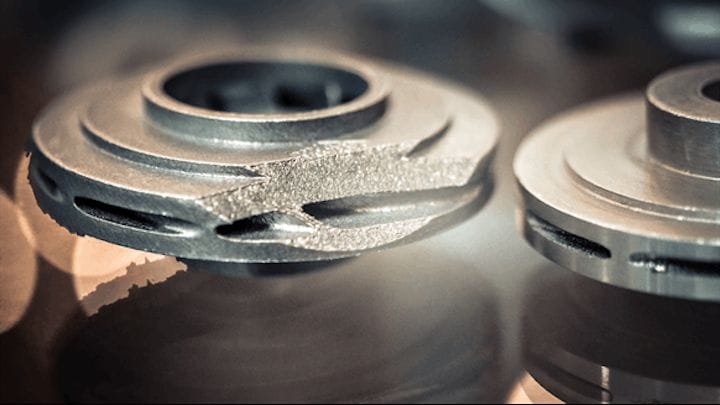![3D printed metal parts [Source: Rigzone / Aurora Labs]](https://fabbaloo.com/wp-content/uploads/2020/05/image-asset_img_5eb0a816c6856.jpg)
One may ask why this industry or that isn’t using 3D printing, but there’s one group that seems to have figured out how to get it going.
While there is plenty of buzz about 3D printing, relatively few industries partake of the technology. Yes, certain industries are now, finally, pushing hard on it, particularly aerospace, automotive and medical, but what about others?
For some it’s simply a case of economics: 3D printing on a per unit basis is still quite expensive, regardless of the amazing items that can be produced. The industries above are already accustomed to paying huge amounts for parts, and thus this hasn’t been a big barrier for them. That’s not the case in many other industries where there simply isn’t yet the business case to proceed.
However, sometimes there is a new business case identified, and that’s what the folks at Australia’s Aurora Labs have done. As we’ve written previously, their concept is to construct a powerful metal 3D printer that can produce large objects in short order: their target is a one-tonne 3D print in less than a single day.
This capability now opens up several interesting business usage scenarios. The one currently being pursued by Aurora Labs is to enable real-time, on-site 3D printing of spare parts for remote mining and oil & gas operations, who otherwise would wait interminably for the arrival of bulky spares being shipped at fantastic expense from headquarters.
This concept could be extremely attractive from two points of view: the cost of shipping the part would be eliminated, and the speed of repair would enable the operation to be back in business far quicker, with a proportional amount of loss avoidance.
Now here’s the problem: if you have a device that does this, and you have a great business concept to use it, how do you actually persuade potential clients to buy in? 3D printer manufacturers like Aurora Labs would be experts in building 3D printers, but likely have very little expertise and connections to the target industries in house.
To sell into a market, you must know that market. You must understand deeply their problems and be able to configure solutions that make sense, technically and financially, and are truly achievable in specific situations.
Aurora Labs tied up with WorleyParsons, a consulting firm for heavy industry, to figure this out.
That makes sense, but what they did next makes even more sense: they created a joint venture specifically to work on this problem. They created something called “AdditiveNow”. Here’s how they describe it:
“AdditiveNow marks the technological partnership between Advisian Digital (WorleyParson’s data science and digital branch) and Aurora Labs. In utilising the knowledge centres of each, we are primed to provide the best in energy and resourcing solutions.”
What does AdditiveNow do? Well, these things:
- Consultation: Assisting operators with additive manufacturing decisions and conducting optimization studies to improve efficiency, operability and manufacturability.
- Engineering: Our Solution Centre comprises an in-house, multi-discipline engineering team to design and certify new parts. Our capabilities include bespoke metal 3D printing.
- Agile Manufacturing – Short Run Productions: Unlike other additive manufacturing services we engineer an entire solution, specific to your business. From Analysis and Design, to final production and deployment.
This is literally a group of experts who can analyze very specific business situations in heavy industry to figure out precisely how the concepts above can be applied to a client.
Aurora Labs need not acquire such expertise themselves, they merely contribute resources to this joint venture. WorleyParsons does the same.
A potential client need only deal with AdditiveNow, as they would understand both the specific industry involved AND the 3D printing technology. They would be able to do critical tasks, for example, identifying which specific parts within a client’s inventory would be financially and technically appropriate to be 3D printed in this manner.
A potential client would be able to work with AdditiveNow and have good expectations that proper solutions that were truly applicable would be developed. That’s a very powerful capability: being able to talk to and work with a client on their own terms, speaking their language and fitting into their processes.
For Aurora Labs, this is a terrific strategy: it should open up many doors that would otherwise remain closed. Their strategy appears to be working.
And it’s also a key lesson for other 3D printer manufacturers that have a great idea: you must partner with an industry to truly understand it before you can launch into it.
Via Rigzone and AdditiveNow











Aerosint and Aconity have proven out their work in multi-metal powder deposition 3D printing.